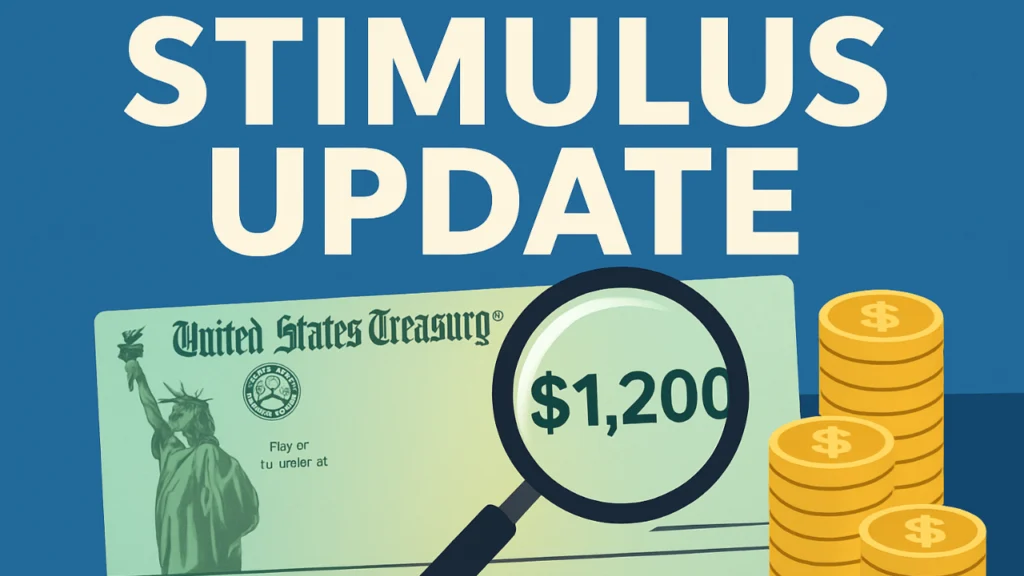There are circulating reports online indicating that Americans may receive new stimulus payments in November or by the end of the year. The Internal Revenue Service (IRS) has made it clear, though, that there will be no further government stimulus checks or direct deposit relief payments in 2025. People on social media have reported they obtained refunds of $1,390, $1,702, or even $2,000, although Congress and the IRS have not substantiated these claims. There are warnings that these messages could be frauds or promote misleading information.. They usually target Americans who are looking for ways to save money on living costs and inflation.
Are Americans Getting Stimulus Checks in November 2025?
No. The IRS and U.S. Treasury hasn’t said anything about any new federal stimulus plans for this year.. The last official stimulus payment was the $1,400 Recovery Rebate Credit from the 2021 COVID-era program, with a final claim deadline of April 15, 2025.
Claims of a $1,702 IRS stimulus circulating in viral posts have been linked to Alaska’s Permanent Fund Dividend, not a federal stimulus. The Alaska PFD is a one-time payment made by the state and is paid for by mineral earnings. It has nothing to do with federal tax refunds or rebate programs.
IRS Warns Against Stimulus Scams
Multiple fraud alerts from the IRS have been sent out to taxpayers telling them to be wary of phishing attempts that come in the form of texts, emails, social media posts, and phone calls that falsely claim to offer new tax refunds or stimulus payments. People who pull these scams usually want your Social Security number, bank information, or proof of a payment. All of these things are red flags for identity theft.
Americans are urged to report suspicious activity to the IRS directly through its official channels to prevent personal data misuse.
American Worker Rebate Act of 2025: What Is It?
One legitimate proposal — but not yet law — is the American Worker Rebate Act of 2025, introduced by Sen. Josh Hawley (R-MO).
The act aims to send checks ranging from $600 to $2,400 to U.S. taxpayer families, depending on income and filing status. But the bill is still stuck in a Senate committee and hasn’t moved or been updated since September.
Until Congress approves and funds such a measure, no payments will be issued under this proposal.
Suggested News//From memecoins to machine chips, the big change in Korea
What Happened to Trump’s “DOGE Dividend” Plan?
Early in 2025, President Donald Trump brought up the idea of a “DOGE dividend.” This was a possible $5,000 boost payment that would be paid for by savings found by Elon Musk’s Department of Government Efficiency (DOGE).
However, no more details, laws, or dates have been shared since they were first brought up at a meeting in Miami. As of November 2025, the plan is still just a guess and hasn’t been passed by Congress.
Tariff Rebate Checks and $2,000 Stimulus Proposals
Another stimulus-related proposal involved using tariff-generated revenue to provide a rebate check to middle-income taxpayers.
Following Trump’s suggestion, Sen. Hawley’s bill formalized the rebate concept, but it has not advanced in Congress.
Separately, Rep. Ro Khanna (D-CA) proposed a $2,000 stimulus check for families earning under $100,000 annually to offset rising costs caused by tariffs. He argued that “Trump’s blanket tariffs are hurting American families” and suggested redistributing the $300 billion in tariff revenue back to consumers. As of now, Congress has not acted on either proposal.
Who Is Getting Inflation Refund Checks in 2025?
While no new federal stimulus checks exist, several states continue sending out inflation relief or rebate payments:
New York: Individuals earning up to $75,000 may receive $200, while married couples earning up to $150,000 can receive $400.
Pennsylvania, Georgia, and Colorado: Offer rebate-style inflation checks for eligible taxpayers or property owners.
New Jersey: The ANCHOR program provides property tax relief up to $1,750 for homeowners 65 and older, $1,500 for younger homeowners, and $450–$700 for renters depending on age and income.
These are state-funded programs, not federal stimulus payments.
Checking Your IRS Tax Refund Status
If you’re waiting for a federal tax refund, the IRS “Where’s My Refund” tool is the best and safest way to track your status.
Here’s how it works:
You can start checking 24 hours after e-filing your return.
The tool updates once daily, overnight.
You’ll see one of three statuses: Return Received, Refund Approved, or Refund Sent.
Once your refund is approved, direct deposits usually arrive within days.
You can also call the IRS at 800-829-1954 for assistance.
If you did not include your bank details, expect a paper check in 6–8 weeks.

